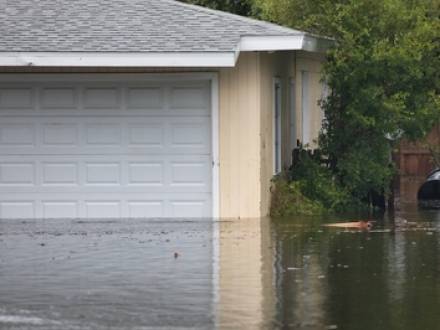Buying a Home in a Connecticut Flood Zone: What to Know
 The mid-2025 real estate market in Connecticut is seeing rising home prices, increased sales and listings, and a particularly "hot" market in the Hartford area. While overall trends show strength, certain factors can influence the likelihood of a sale. Although Connecticut’s shoreline communities are among the most desirable places to live in New England, they can also be vulnerable to flooding. Certain inland areas in the state are also considered more likely to experience flooding incidents.
The mid-2025 real estate market in Connecticut is seeing rising home prices, increased sales and listings, and a particularly "hot" market in the Hartford area. While overall trends show strength, certain factors can influence the likelihood of a sale. Although Connecticut’s shoreline communities are among the most desirable places to live in New England, they can also be vulnerable to flooding. Certain inland areas in the state are also considered more likely to experience flooding incidents.
Increasingly stronger storms, rising sea levels, and revised FEMA flood maps are changing how buyers, sellers, and lenders view coastal homes, as well as any Connecticut home located in a floodplain. A property that seemed like a solid investment could suddenly require expensive flood insurance or be less desirable to buyers following a new floodplain designation. An experienced Stamford, CT real estate attorney from Law Offices of Daniel P. Weiner can help you determine whether buying a property in a designated floodplain is worth the risk.
How Does FEMA Determine Connecticut Flood Zones?
FEMA conducts Flood Insurance Studies that analyze flood hazards. These hazards can include storm surges, rainfall, and river flooding. Engineering models are then used to predict the Base Flood Elevation by incorporating terrain, historic data, flood control works, and development to identify any areas that have a one percent annual chance of flooding. These are known as Special Flood Hazard Areas. When all this information is put into the mix, the results are presented on Flood Insurance Rate Maps (FIRMS), showing floodplain boundaries and high, moderate, and low flood risk areas.
What is the Role of Flood Insurance Rate Maps (FIRMS) and Why Can Properties Suddenly Shift Categories?
The primary role of FIRMs is to guide flood insurance requirements and help determine insurance premiums for the National Flood Insurance Program. Properties can suddenly shift categories on FIRMs when FEMA updates maps to reflect changing environmental conditions and new data. The maps are periodically updated to reflect the most current flood risks. A property that suddenly changes flood category can significantly impact insurance requirements and rates. The most common reasons flood maps change include:
- Climate and environmental changes that affect sea-level rise and coastal erosion
- New construction and development increase the amount of surfaces, such as rooftops and roads, which changes drainage patterns and results in higher levels of runoff.
- New mapping technology provides more accurate topographic data.
- Aging infrastructure, including dams and levees, can decay over time, reducing the protection they once offered.
How Could You Be Affected By a Flood Zone Change?
A property you recently purchased or a property you have owned for years could suddenly change flood zones. If your property is mapped into a higher-risk flood zone, your mortgage lender could require you to purchase flood insurance, which is typically fairly costly. In some cases, you could be eligible for a "Newly Mapped" discount for the first year with gradual premium increases until the full-risk rate is reached.
If you were planning to sell your property, you may find that the higher-risk flood zone creates reduced marketability and buyer hesitation. There is a definite effect of required flood insurance on perceived and actual affordability. Interested buyers could run into mortgage lender restrictions and appraisal complications, as most homes lose value following FEMA remapping into a higher-risk flood zone.
If you are buying a home, Connecticut disclosure laws require disclosing flood hazards and insurance requirements, but it is important to review FEMA maps before purchasing a property. Depending on your situation, FEMA flood map designations can sometimes be challenged through a Letter of Map Amendment. Flood mitigation improvements may also help protect a home’s resale value.
Contact a Fairfield County, CT Residential Real Estate Lawyer
If you are buying property in Connecticut, flood zone designations could make or break your investment. A highly skilled Stamford, CT real estate attorney from Law Offices of Daniel P. Weiner can help you review FEMA flood maps, understand disclosure requirements, and protect your financial investment before closing. To schedule your free consultation, call 203-348-5846.







